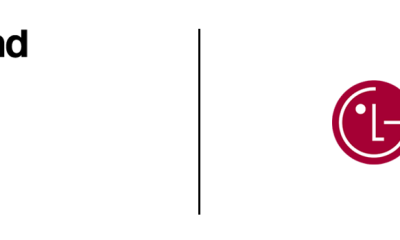Op-Ed
Team Building – A necessity or a waste of time

Team Building (Image source: Marsha Ferrick)
Despite the misconception that team building is lame and barely seen as relevant, did you know that team building is the most important investment you can make for your team? It builds trust, mitigates conflict, encourages communication, and increases collaboration. Effective team building means more engaged employees, which is good for company culture and boosting the bottom line.
In this article I will be talking about the importance of team building and sharing some valuable tips on how to plan effective team building activities.
Why Team Building?
1. Networking and socializing
Socializing and getting to know your team in the workplace is one of the best ways to increase productivity in the office. Besides the fact that it increases morale in the office, it also allows for team members to work better at solving everyday workplace issues.
2. Teamwork and boosting overall performance
Employees tend to understand each other better after completing a team building activity. It becomes easier to identify each other’s strengths, weaknesses, and interests. This collaborative spirit and team effort helps everyone work even better together on future projects vital to a company’s progress.
3. Fostering of innovation and creativity
Successful team building events not only bring people closer together, but they also contribute to a more successful and creative workplace. Games and competitive exercises become more challenging as people tend to have a larger imagination when they are around people they are comfortable with.
4. Communication
To no surprise, communication and working better together is the top reason why people choose team building. Everybody desires a friendly work environment, where people are comfortable and happy to talk to and collaborate with anyone. One of the results of team building is that the activities actually work to improve communication.
Are you looking to improve your team’s communication skills, collaborativeness and performance? Here are some tips.
How to plan an A++ team building activity.
1. Identify the goal of this event
This includes identifying what you want the focus to be on. It is best to plan an entire team-building session around key objectives. For example, if you want to foster better communication among group members, then your activities should include initiatives that call for various combinations of players taking a leadership role in giving directions, commands or ideas in both verbal and non-verbal mediums.
2. Replace the usual team dinner with something new
Choosing something unique and slightly outside of people’s comfort zones can encourage them to come together in new ways. Take your team paintballing or maybe a boxing ring to let off some steam. A little physically challenging activity might be all you need to get people to destress.
3. Quit looking at it as a favor but as an investment
This event isn’t a fluff. You don’t have to break the bank for something fancy or to go on expensive trips or experiences, but don’t skimp either. Be willing to make a real investment. Bad experiences stick longer than beautiful memories.
4. Keep it up
Most team-building events fall flat because it’s a one-time activity that is done and then forgotten. It’s key to find ways to keep organizing these events. The challenge is creating opportunities for people to connect and interact in meaningful ways, outside of regular meetings or presentations. One way we do this is to have a monthly team hurdle. At this event, team members can celebrate achievements and show appreciation to their co-workers.
5. Assessment/ Evaluation
After team building, one must evaluate and measure impact. For one to measure a team member’s ability to collaborate with other departments on projects, I would recommend that this be evaluated or assessed during performance appraisal. This can be done in the form of questionnaire, survey or during 1-on-1s with other team members. This is the easiest way to track improvement when it involves showing team effort. thanks.
How do you know you’ve gotten team building right? If there was laughter, a sense of excitement and accomplishment, and maybe a few Instagram moments, you’re definitely on the right track! A little adventure and pizzaz can unlock many levels of creativity.
Aurthor: Veronica Alfred, Head of Talent at She Leads Africa
Op-Ed
People are not a pillar: It’s time to invest in potentialising people

By Savina Harrilall, Chief People Officer at Mukuru (Image: Supplied)
The Harvard Business Review describes the secret of corporate success as ‘human magic’. A culture that creates a space within which people thrive and where their ambitions, passions and commitment translate into productivity, results and shared growth. It is also an essential investment into the business at a time when people are feeling invisible and stressed amidst a storm of geopolitical and economic instability. The International Monetary Fund report released halfway through 2024 found that while global growth looks relatively stable on the surface, there are undercurrents affecting overall positivity and momentum.
The world is, as the report describes, in a sticky spot. And people do not work in isolation of these undercurrents. Gallup found that 20% of the world’s employees are lonely, engagement is stagnating and overall well-being is on a decline. The cost of this disengaged, deflated workforce, says the company, is in the region of $8.9 trillion and approximately 9% of the global gross domestic product (GDP). Employees are also feeling replaceable.
The American Psychological Association (APA) shows that the mercurial economic, social and political environments are influencing employee decision-making and needs. Employees are increasingly seeking stability, well-being, and meaning in their work. Unfortunately, the lingering effects of the pandemic continue to destabilize organisational foundations. As a result, both companies and employees are grappling to regain their equilibrium.
Defining employee potentialising
People are not a pillar within the business, they are its foundation. If they are committed, engaged and supported, then they deliver that elusive magic and bring their energy that can ignite a company’s culture. And ticking all of these boxes comes down to leadership. The environment follows the leader – people will want to give more, be more and create more if they feel that they are working within a company that values their potential, and recognises their worth.
Potentialising employees means measuring the success of a business against the success of its people. Your business can invest in all of the right baseline tools such as leadership enablement, benchmarking, and referencing against people practices, but if you’re not actually putting people at the centre of these conversations, you’re not prioritising their potential. People don’t want to hear about benchmarks and metrics and standards – they’re important, sure, but people want to hear about the people-things. They want to know what your business is doing to enable their success. This takes people-centricity a level up.
At Mukuru, we have spent time building our foundations so we can embrace the concept of potentialising the employee. We have the compliance, the certifications and the standards – for example, we did not publicise being BB-BEE compliant for the first time in 20 years, not because it is not newsworthy, but rather because we understand and see this as a step towards unlocking opportunities for our people. It is how we ensure we continue to create employment opportunities and expand the skillsets of employees and potential employees, thereby supporting the growth of our current and future talent.
Redefining people within growth
Mukuru is driving commercial outcomes by prioritising our interactions with people, both inside and outside the organisation. Every person within the company is skilled and a leader of their own roles, and masters of their destinies. Recognising their individuality and embracing diversity, enables the cultivation of spaces where our people can thrive. This, in turn, enhances our interactions with customers. Happy employees lead to satisfied clients, and happy customers make for a successful business.
Creating a psychologically safe space for employees ensures that people feel they truly belong. As a recent Harvard Business Review study into the value of human-centred leadership found, employee fulfilment rests on the foundations of leadership, recognising the individual, and meeting unique needs. Levelling up on servant leadership is heart leadership. Heart leadership champions empathy and elevates humanity and authenticity, where leaders relate to employees by investing, empowering and caring for them. This is the secret sauce to potentialising.
The myth of a 9-to-5 model to drive employee productivity must be shattered once and for all, and in its place, we need flexible work environments that align employee and organisational needs – building spaces that allow people to thrive. Nobody needs to be perfect. None of us are perfect. Nobody needs to fit a specific mold. We need to smash the mold and elevate uniqueness. The primary goal, particularly at Mukuru, is to inspire people to fully embrace their authentic selves in their roles while fostering a culture of mutual respect and civility.
When the organisation prioritises and shows up for its people, the people become motivated to invest in themselves and wholly show up for the organisation. And this synergy is when it truly discovers the value of potentialising its employees.
Health
Dr. Jesupelumi Adenihun: Adopting a lifestyle of sustainable health practices with food

Dr. Jesupelumi O. Adenihun (Image: Supplied)
You have likely heard the saying, “You are what you eat,” and it couldn’t be truer. What we consume plays a far greater role in our health than many of us realize. Over time, our eating habits can either support our body’s natural healing processes, leading to improved health and vitality, or contribute to nutrient deficiencies, inflammation, and even chronic diseases.
What this means is, our eating habits over time sets off a series of chain reactions in our bodies that impact our overall well-being. The good news, however, is that by consistently making the right food choices, we can put ourselves on the path to a state of good health and well-being. While this might sound daunting at first, it is often the small, consistent actions that yield the best results. Let’s take a look at 10 simple but effective habits you can begin to cultivate for better health and adopt as lifestyle practices:
- Substitute soda with water: No beverage is more refreshing or beneficial than plain water. It hydrates, cleanses, and confers numerous health benefits.
- Snack on nuts and seeds: When you are craving a snack, go for nuts or seeds, unless you have an allergy. They are nutrient-dense and can also be satisfying.
- Opt for grilled or baked over fried: Choosing grilled or baked foods helps reduce unhealthy fat intake without compromising on flavor. This also helps reduce the risk of developing high cholesterol levels which is a cardiovascular risk.
- Enjoy homemade smoothies over sugary drinks: When time permits, make homemade smoothies making use of reliable recipes. If you are short on time, consider vendors who provide fresh, nutrient-packed options.
- Practice mindful eating: Mindful eating means being fully present during meals, savoring each bite, and listening to your body’s signals. Eating mindfully is a game changer for a lot of people.
- Be well-informed about what you consume: Whether it’s food or drinks, it is essential that you stay conscious of what’s in your food and drinks. Many packaged products contain hidden sugars that the body doesn’t exactly need. Always take a moment to check the ingredients.
- Add more vegetables to your plate: Think beyond the usual veggies—some varieties exist which also depends on your geographical location. Be open and willing to explore new options and add color to your meals.
- Prioritize lean proteins: Not all proteins are created equal. Make lean protein choices and consider plant-based options to support your overall health.
- Use natural spices over salt-laden seasonings: High salt intake is known to be a contributor to heart-related conditions like hypertension. Opt for natural herbs and spices to add flavor without carrying on health risks.
- Stay physically active: Find an activity you enjoy and can commit to, whether you are at home or on the go. Consistency is key. Also seek the counsel of a coach if you need to.
Remember, true wealth lies in your health. Let each meal choice you make be a step toward a healthier, more vibrant life. Eat to wealth, health is wealth.
Written By: Dr. Jesupelumi O. Adenihun (Nutrition Coach, Preventive health care specialist).
Legal Business
Morenike George-Taylor: The fundamental term to include when raising investment

Morenike George Taylor, Founder Reni Legal Consulting | County Support Consulting (Image: Supplied)
I remember a pivotal moment in my career that taught me a profound lesson about the importance of securing sufficient funding for a project. It all started when my team and I were working on an ambitious venture, a hotel to be located in Lekki, a high brow area in Nigeria. After months of planning, I found an investor who was excited about the potential. He assured me that he would provide the necessary funds to bring our vision to life.
Initially, the investor invested a portion of the money, which gave my team and I a glimmer of hope. With that commitment, I felt a surge of confidence. We began allocating resources, hiring a team, and setting timelines. Everything seemed aligned for success.
However, as we progressed, the promises began to wane. The investor started delaying further payments, citing various reasons that ranged from market fluctuations to unforeseen personal issues. Each time I reached out for updates, I was met with assurances that the funds would come through soon. Then, midway through the project, the investor informed me that he could no longer fund the project.
This sudden withdrawal created a domino effect. We had already committed to other businesses that were relying on our funding to get started. As the primary business was still in development, those secondary businesses began to pressure me for repayments. They had their own obligations, and without the promised funds, they found themselves in a precarious position. It was an overwhelming situation, and I watched helplessly as relationships soured and trust evaporated.
The main business, which had so much promise, struggled to survive. Without the necessary capital, we couldn’t complete our operations or deliver our product to market. As the financial strain mounted, it became clear that our venture was on the brink of collapse. Ultimately, the business we had worked so hard to build didn’t make it.
This experience was a harsh but invaluable lesson. It underscored the critical importance of raising sufficient funding before embarking on any ambitious project and how this needs to be taken into consideration in any contract documentation you sign. If I had tied all our contracts and obligations to the complete funds being raised, we could have safeguarded our operations against such unforeseen circumstances.
This experience taught me that in business, clarity and preparation are paramount. Without sufficient funding, dreams can quickly turn into nightmares, and projects that hold so much promise can fade away before they even have a chance to succeed
In the world of business, securing adequate funding is crucial for success. Particularly, if you require $1,000,000 for example to execute your vision, it is essential to raise that exact amount and tie all your contracts to this figure, especially concerning repayment terms. This approach ensures that your business can commence operations without financial strain.
When you set out to raise capital, clearly defining your financial needs is the first step. If you determine that your project requires $1,000,000, raising exactly that amount helps avoid unnecessary complications. Insufficient funding can lead to a cascade of operational issues, including delays, inability to meet contractual obligations, and ultimately, project failure. By securing the full amount, you create a solid foundation for your business operations.
Tying your contracts to the $1,000,000 funding goal is a strategic move. This means that all agreements—whether with investors, lenders, or partners—should explicitly state that the commencement of business activities, as well as repayment obligations, are contingent on successfully raising this amount. If the funding goal is not achieved, the repayment terms should reflect that the business cannot commence. This protects you and your stakeholders from the risks associated with undercapitalization.
By ensuring that all agreements explicitly stated that the project’s commencement and the repayment terms hinged on successfully raising that target amount, we would have mitigated the risks of undercapitalization. It became clear to me that having a well-structured funding strategy is not just a financial necessity; it’s essential for operational stability and long-term success.
Now, I always emphasize to entrepreneurs the importance of securing the full amount required before diving into a project. A well-capitalized venture is not just better positioned to navigate challenges; it can seize opportunities and grow sustainably.
About the author:
Morenike is an award winning business strategist and the founder of Reni Legal Consulting and County Support Consulting. She operates as a business consultant across various sectors, leveraging her extensive expertise to provide strategic insights and tailored solutions. With a keen understanding of the complexities of different industries, she helps organizations navigate challenges and seize opportunities for growth.
As a qualified lawyer, Morenike combines her legal knowledge with a strong foundation in data management, agile methodologies, and risk management. She is a certified Data Management Professional, a Disciplined Agile Scrum Master, and a Risk Management Professional. This diverse skill set allows her to approach each consulting engagement with a comprehensive perspective, driving operational efficiency and fostering organizational success.
-

 Afripreneur2 days ago
Afripreneur2 days agoOluchi Anoruo on building SmartPharm and addressing access to healthcare products
-

 Afripreneur2 days ago
Afripreneur2 days agoRedefining Real Estate Marketing: An Interview with Imelda Usoro Olaoye, Founder of Thinkmint
-

 Economy2 days ago
Economy2 days agoMeta Hosts its First Youth Summit in Nigeria to Drive Innovation and Empowerment
-

 Afripreneur17 hours ago
Afripreneur17 hours agoMeet Datari Ladejo, the digital strategist helping brands thrive in the digital economy
-

 Technology2 days ago
Technology2 days agoLG’s Brand Reinvention: A Global Success Story















